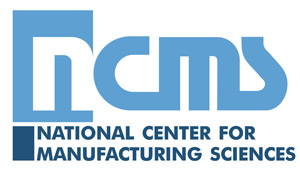Test Measurement and Diagnostic Evaluation (TMDE) Initiative – Phase II
NCMS Project #: 140732
Problem: Maintenance and sustainment support efforts in commercial industries are heavily reliant on Test Measurement and Diagnostic Equipment (TMDE). A combination of tools and test equipment is used. Double and triple redundant TMDE systems are often in place generating more costly manufacturing processes and inefficiencies. The key enabler for improving TMDE systems within the Marine Corps is their Electronic Maintenance Support System (EMSS).
Benefit: The results of this analysis will be extrapolated to support broader industry, public, and DoD applications. By using qualitative and quantitative tools the analysis will be repeatable and testable. The public will benefit when industry’s lifecycle cost reduction translates into reduced prices for goods and services.
Phase II benefits will provide DoD with cost-informed alternatives to support TMDE and EMSS implementation across a broader user community, and expose DoD to additional industry vendors thereby expanding the defense market. When widely adopted, DoD stands to benefit from clear requirements development through a reduced maintenance burden that improves equipment availability. This will ultimately translate into supply, maintenance management and maintenance touch labor reductions. This will not only ease the burden of impending reductions in end strength, but also reduce the required number of spares and consumable parts needed – and all of the deployment and distribution required to supply these items to deployed units which operate the equipment more heavily than in garrison training.
Solution/Approach: The Phase II objective is to assess EMSS’s capabilities and limitations, to identify emerging commercial technologies to address/improve EMSS, to understand the potential benefits/risks to EMSS capability requirements, to identify cost impacts over time, and to collaboratively develop an implementation plan for the marines and commercial industry to consider.
Within Phase II of this project, the CMTA team will perform systems requirements analysis and development of cost informed implementation strategies. Secondly, the team will work in close concert with the core stakeholders and subject matter experts to evaluate the impact of formal Requirements (JCIDS and Marine Corps Force Development processes and systems), as well as enterprise and systems architectures describing the systems, processes and standards required to implement any recommended solutions within the Marine networks.
Impact on Warfighter:
- Reduced time assets spent in maintenance
- Improved equipment readiness
- Reduced operating, overhead and lifecycle costs
- Flexible hardware platforms improving TMDE support
DOD Participation:
- U.S. Marine Corps, Installations & Logistics (LPC)
- U.S. Marine Corps Systems Command (TMDE team lead)
- U.S. Marine Corps, Capabilities Development and Integration (LID)
Industry Participation:
- Whitney, Bradley and Brown, Inc.
- PORTAC Consulting, LLC
- NCMS
Benefit Area(s):
- Cost savings
- Repair turn-around time
- Obsolescence management and continued maintenance capability
- Improved readiness
Focus Area:
- CBM+
